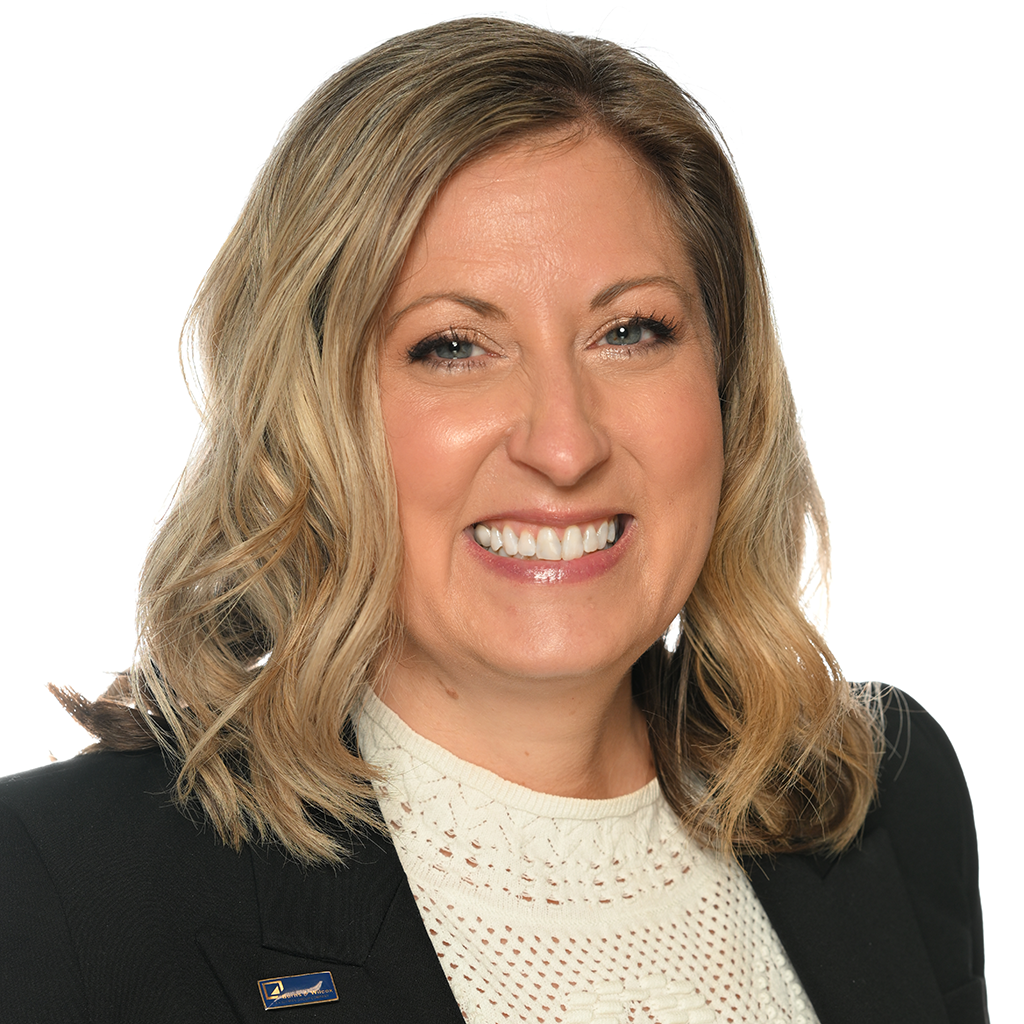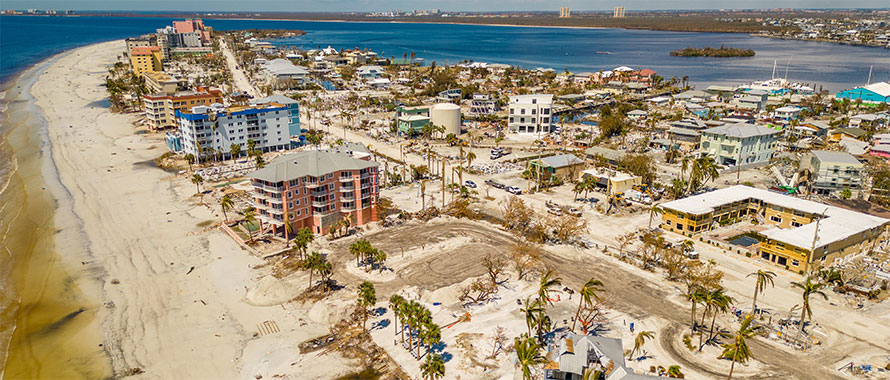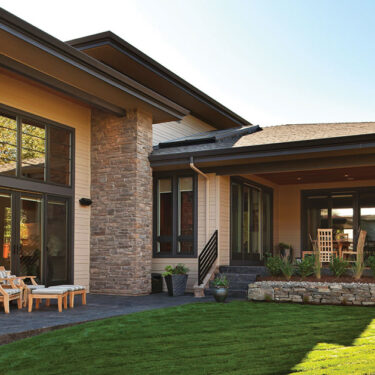Updated building codes in Florida may have made the difference between damage and total destruction for some properties hit by Hurricane Ian. A post-storm aerial photo of a section of Fort Myers Beach shows one intact home surrounded by 18 homes that were leveled, Insurance Journal reported. The difference, experts say, could be that the home left standing was built in 2020 and the others were built prior to 1981, before building codes in Florida were strengthened in the wake of Hurricane Andrew.
Featured Solutions
“When they put these building codes into place, they are doing it for a reason,” said Heather Posner, Associate Vice President, National Product Leader, Private Client, Burns & Wilcox. “There is proof that they withstand and perform better during hurricanes.”

There are always lessons to be learned when something like this happens, including looking at the houses that had virtually no damage compared to the ones that did. The new codes are withstanding a whole lot more from a storm standpoint.”
Estimates show that insurance losses from Hurricane Ian, which made landfall Sept. 28, could range between $42 billion to $57 billion, Reuters recently reported. Properties that were less seriously affected could offer important lessons for municipalities considering new building codes and for individuals looking to reduce their risk of a loss and have an easier time purchasing Homeowners Insurance and Flood Insurance.
“There are always lessons to be learned when something like this happens, including looking at the houses that had virtually no damage compared to the ones that did,” said Karen Preston, Manager, Personal Insurance, Burns & Wilcox, Tampa, Florida. “The new codes are withstanding a whole lot more from a storm standpoint. It is unfortunate that the older homes do not have that.”
Florida’s codes considered strongest, further updates may be needed
In a 2021 ranking by the Insurance Institute for Business & Home Safety, Florida was considered to have the strongest building codes among Gulf and Atlantic Coast states, Property Casualty 360 reported in June of 2021. South Florida, in particular, has the “toughest” codes for hurricanes and wind in the world, one expert told CBS Miami in September. Newer codes may include requirements on roof-to-wall connections, hurricane shutters and impact-resistant windows, Insurance Journal reported.
“Whether it is solid concrete pilings on raised foundations or the impact resistant windows, hurricane shutters, roof shape (hip vs gable), or concrete block versus frame construction, those do tend to better withstand hurricanes and there is a reason why those building codes are there,” Preston said. “Florida reviews building codes every three years at a minimum making changes when needed.”
The focus of these building codes is “keeping damage out of the structure,” Posner said. “It is about keeping the roof on and protecting openings to make sure that water and debris cannot come into a structure. Making sure that the way the roof and the walls are connected, such as single or double wraps, along with the structure of the home, uses the best materials that are going to help withstand wind is also important. Impact-resistant windows and doors are also a part of that. If you do not have those things, you are going to sustain more damage.”

Unfortunately, until something happens to the area itself, it tends to be looked at like ‘that is not going to happen here.’ Hurricane Andrew was a Category 5 hurricane in 1992 yet we still had homes on the coast of Florida that were not wind-mitigated.
Some experts believe even more stringent codes are necessary, especially as storms become more severe, NPR reported in October. The Insurance Institute for Business & Home Safety in 2021 categorized 18 states as “poor” for hurricane preparedness in building codes. They also noted in a press release that inconsistent codes could leave some states more vulnerable to storm damage.
“Unfortunately, until something happens to the area itself, people tend to think ‘that is not going to happen here,’” Posner said. “Hurricane Andrew was a Category 5 hurricane in 1992, yet we still had homes on the coast of Florida that were not wind-mitigated.”
Updating home to modern building codes could reduce insurance cost
The implementation of newer building codes could ultimately make Homeowners Insurance more affordable for homeowners. Florida homeowners pay the highest insurance premiums in the U.S., many carriers have stopped writing new policies in the state, and homeowners are increasingly turning to the state’s “insurer of last resort” for coverage, NPR reported in October. Homes that have storm mitigation measures in place will often pay less for their policies, Preston explained.
“High-impact glass, shutters, all of those things can help reduce premiums,” said Preston, who encouraged wind-mitigation inspections for those looking to buy a home. “The cost of insurance is definitely higher for the older homes. And, in some cases, when markets are really hard like they are right now, some carriers will not write the home unless it is fully mitigated. It can help with eligibility as things keep tightening up.”

When the insurance market was soft, a lot of folks were able to get wind coverage without necessarily having all of this mitigation done. I think that is a thing of the past.
Posner agreed, emphasizing that these upgrades can help homeowners keep their families safe, minimize damage, obtain discounts on their Homeowners Insurance, or even make it possible for them to access certain coverages at all. “With the hardening market, it is really about whether or not the client will be able to get insurance coverage, especially wind coverage,” she said. “When the insurance market was soft, a lot of folks were able to get wind coverage without necessarily having all of this mitigation done. I think that is a thing of the past.”
Homeowners should know that taking steps to improve their home’s storm readiness, such as installing hurricane straps or replacing windows with impact resistant, installing hurricane shutters, or even upgrading your garage door “does not have to be very costly,” Posner said. In addition, financial assistance for home-hardening efforts could soon be available for some Florida homeowners under a program that would provide grants up to $10,000 for storm-safety improvements, the Tampa Bay Times reported in October.
“There are ways to retrofit and mitigate older homes that I have to assume were not done with a lot of those homes [destroyed by Hurricane Ian],” she said. “Compared to not being able to get wind insurance and having a total loss on your property — or, heaven forbid, having a loss of life, too — it is not so costly.”
Homeowners should read insurance policies in full, review options
While Homeowners Insurance can help pay for damage due to wind and other hurricane-related destruction, these policies generally exclude coverage for flood. Most homeowners affected by Hurricane Ian did not have a Flood Insurance policy, leaving them without coverage for significant damage to their homes, CNN reported on Oct. 9. Florida officials have warned residents to beware of mold growth following Hurricane Ian, and one expert told WFTS Tampa Bay in a Nov. 4 report that a “city of mold” was possible after the storm, particularly if signs of mold are not noticed when homeowners begin repairs.
“Anytime you have a lot of water, there is a risk for mold,” Preston said. “Inspectors have a lot of tools and techniques to detect moisture, but the due diligence of checking for it is important.”
If mold is missed during the repair process and it becomes an issue months or years later, it could be considered existing damage, Preston said. “Most policies have an existing damage clause,” she said.
Mold may develop slowly in some cases and can be found inside walls or between the outside structure of the home and the insulation, making it more difficult to detect, Posner added. “If those areas do not appear to be damaged or are not getting replaced, that is where there can be an increased potential for mold,” she said. “If you are utilizing a good mitigation crew and they are licensed, insured and credible, those homeowners are less likely to have issues.”

With many older homes, the dwelling coverage may be too low and if they needed to be rebuilt now to current codes it is going to cost much more… It is possible they are very underinsured.
Homeowners should also consider whether their Homeowners Insurance policy covers the full replacement cost of their home and if extended replacement cost is available. Additional coverage may also be needed for the cost of rebuilding a home according to new laws and ordinances. These details are critical as building costs increase, Preston said.
“With many older homes, the dwelling coverage may be too low and if they needed to be rebuilt now to current codes, it is going to cost much more,” she said. “With the cost of materials being so much higher right now, a lot of homeowners’ coverage levels are probably lower than what they really need. It is possible they are very underinsured.”
It is important to understand the terms and details of your policy. For example, if you can purchase a policy with 125% extended replacement cost, you will be provided up to 25% more than the indicated replacement cost on the policy. This allows homeowners to better protect themselves against fluctuations like rising labor and materials costs, Posner said.
“An insured may only be able to secure a policy with 100% replacement or rebuild cost, if that is the case, you want to verify that your replacement or rebuild cost has been updated to what it would cost with today’s pricing and construction environment,” she said. “We were already in a sort of crisis with COVID because of supply chain issues, shortage of materials and labor, so it is almost like a catastrophe on top of a catastrophe for these folks — the perfect storm.”
With all of this in mind, Preston said the best advice for consumers is to work with an experienced agent or broker and have them explain their coverage options. “Read your policy declaration. I know they are long, but it details out where the exclusions are,” she said. “Ask questions: Can I add this coverage or increase this coverage? What is my hurricane and wind deductible? Homeowners need to understand their policy. That is the part that gets missed a lot.”
Beyond that, it is a matter of hardening your home as best you can and having emergency procedures in place for your family, Posner said. Homeowners should have emergency kits including flashlights and batteries, clean water, a food supply, and the materials and tools needed to mitigate any immediate damage so it does not get worse.
“Many homeowners affected by Hurricane Ian are not going to be back in their home for a very long time because the whole home has to be rebuilt, and individuals often do not realize the stress of being displaced until they are going through it,” she said. “Individuals are resilient, but it is really hard to be resilient when nothing is back to normal for you. There is more than just financial cost when it comes to being displaced from your home.”







